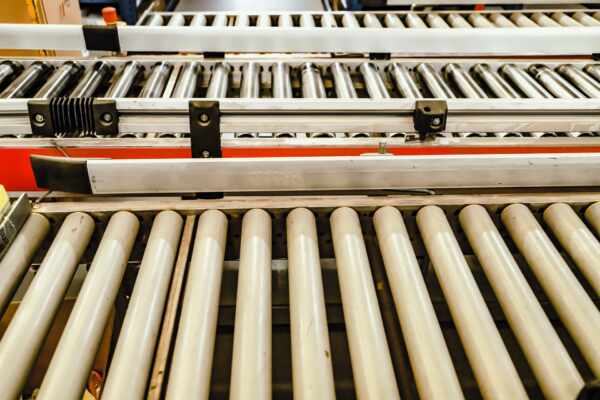Conveyor belt systems are the backbone of food manufacturing facilities, facilitating efficient material and product transportation across the production line. With heavy use and continuous operation, these systems may eventually face issues such as wear, tear, and potential malfunction. In such instances, facility managers often face the dilemma of whether to repair or replace the conveyor belts.
Making the right decision between repairing or replacing conveyor belts is crucial, as it can significantly impact your facility’s productivity, efficiency, and overall operational costs. Understanding your facility’s unique requirements, evaluating the condition of the belt systems, and considering the long-term implications of either repair or replacement will enable you to make an informed decision that best suits your needs.
In this insightful guide, we will discuss the critical factors to consider when choosing between conveyor belt repair and replacement, including the extent of damage, the age of the conveyor belt, operational downtime, and cost implications. We will delve into the importance of evaluating these factors in the context of your specific food manufacturing facility and offer insights on how to arrive at an optimal decision. Ultimately, our aim is to help you balance cost, functionality, and productivity with a decision that bolsters your facility’s long-term success.
Are you struggling to decide whether to repair or replace your food manufacturing facility’s conveyor belts? Consult the experts at Change Parts Pty Ltd for specialised advice, tailored solutions, and premium-quality products that deliver the perfect balance between cost and efficiency, ensuring your facility remains a high-performing powerhouse in the food manufacturing industry.
Key Factors to Consider
When choosing between repairing or replacing your conveyor belt system, it’s essential to consider the following factors:
- Extent of Damage: Assess the nature and severity of the issues affecting your conveyor belt system. If damage is minor and localised, repairs may be the most cost-effective option. However, significant or widespread damage may warrant a full replacement, as repairs could prove to be temporary and ultimately more expensive.
- Age and Expected Lifespan: Evaluate the age of your conveyor belt system and compare it to its expected lifespan. If your system is nearing or has surpassed its expected lifecycle, a complete replacement may be the most efficient and cost-effective decision, as repairs may only provide a short-term solution.
- Downtime and Productivity: Consider the impact of downtime and productivity on your food manufacturing facility when making your decision. Repairing conveyor belts may involve shorter downtime, but if the repairs are unreliable or need frequent repeats, it may interfere with productivity in the long run. A complete system replacement may involve a longer initial downtime, but could ensure smoother operations moving forward.
- Cost Implications: Analyse the costs associated with both repairing and replacing your conveyor belt system, including labour, materials, and the potential for future repairs or replacements. Often, the decision comes down to whether repairs will provide a long-term solution or if the investment in a new system is necessary to maintain productivity and efficiency.
Evaluating Conveyor Belt Damage
To better understand the extent of damage to your conveyor belt system, conduct a thorough inspection and assess the following issues:
- Wear and Tear: Regular wear and tear is a common issue for conveyor belts in food manufacturing facilities, especially since they operate continuously and endure heavy loads. Look for signs such as worn surfaces, frayed edges, or cracks in the belt material.
- Punctures or Tears: Conveyor belts transporting sharp or abrasive materials may be susceptible to punctures or tears, which can affect system efficiency and compromise product safety.
- Splice Failures: Examine the splices and joints within your conveyor belt system, as these critical components can weaken or fail over time, leading to potential separation or belt malfunctions.
- Mechanical Damage: Inspect the rollers, pulleys, and other mechanical components of the conveyor belt system for signs of wear, damage, or misalignment, which can impair system performance, damage the belt, or cause accidents.
Conveyor Belt Repair Techniques
If you decide to repair your conveyor belt system, consider employing the following techniques:
- Vulcanisation: A process that involves the use of heat and pressure to bond damaged sections of the conveyor belt, restoring its strength and integrity. Vulcanisation is particularly suitable for fabric and steel belts and can provide a durable, long-lasting repair.
- Cold Bonding: A repair method that utilises adhesives to join damaged sections of the conveyor belt without the need for heat or pressure. Cold bonding is ideal for quick, on-site repairs of minor damage but may not be as durable as vulcanisation.
- Mechanical Fasteners: A technique that employs metal fasteners to join damaged belt sections, suitable for situations where a rapid repair is necessary. However, mechanical fasteners may have shorter lifespans than other repair techniques and may require more frequent maintenance.
Conclusion
Choosing between repair and replacement of your food manufacturing facility’s conveyor belt system involves a careful evaluation of factors such as the extent of damage, system age, downtime implications, and overall costs. A thorough assessment of these factors will enable you to make an informed decision that maintains efficiency, enhances productivity, and reduces long-term operational costs.
Collaborating with industry experts, such as Change Parts Pty Ltd, can significantly streamline the decision-making process by providing valuable insights, specialised advice, and high-quality products and services that cater to your food manufacturing facility’s unique needs.
Ready to take your food manufacturing facility to the next level? Contact Change Parts Pty Ltd, the leading conveyor belt company, today for expert guidance and tailor-made solutions to tackle your conveyor belt system challenges. Our team of experts will work with you to provide the highest-quality conveyor belt products and services, ensuring your facility operates at peak performance and stays ahead in the competitive food manufacturing landscape. Trust the experts at Change Parts Pty Ltd to elevate your facility’s performance now.




